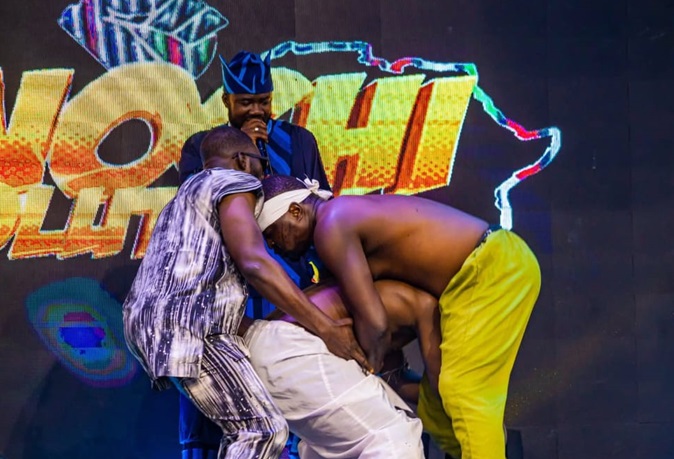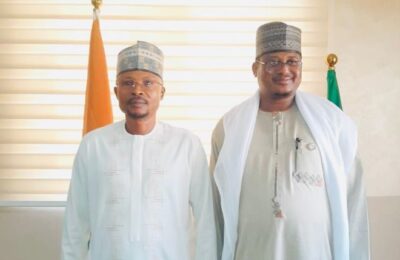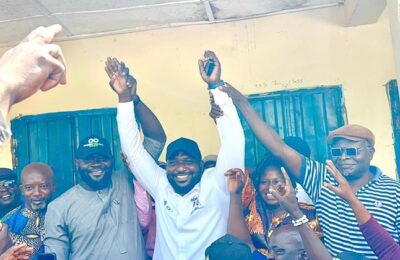In the heart of Kogi State, Nigeria, lies a cultural treasure that has endured through generations — Itinochi. Known widely as the Okene cloth, Itinochi is more than a piece of fabric; it is a living symbol of identity, creativity, and unity among the Ebira people (Anebira). Alongside the iconic cloth, the Ebira beads — known locally as Uwei — stand as another distinct expression of beauty, craftsmanship, and cultural pride.
Both Itinochi weaving and Uwei bead-making are not just cultural practices but also recognized skills areas under Fashion Design and Garment Making, which are vital components of Technical and Vocational Education and Training (TVET) for youth empowerment and sustainable livelihoods.
A Historical Background of Itinochi and Ebira Beads (Uwei)
The origin of Itinochi dates back centuries, when Ebira women in Okene began weaving cotton threads into colorful patterns using traditional wooden looms. This handweaving art was more than a domestic craft — it was a form of expression, a testament to discipline, and a display of communal values. Every stripe, motif, and color combination carried cultural significance — representing beauty, dignity, and unity.
Historically, Itinochi was worn during important community ceremonies such as marriages, festivals, coronations, and ancestral rites. It symbolized prestige, pride, and belonging within the Ebira community.
Complementing this cultural art is the ancient craft of Ebira bead-making, locally known as Uwei. These beads, usually coral, red, or amber in color, are handcrafted and worn during traditional occasions. There are distinct types of Uwei:
Omoh — the most expensive and highly revered, often compared to gold in value.
Isuu — the second in value, symbolic of elegance and silver-like refinement.
Ovene — the more common and affordable blue bead, often used for daily adornment.
Together, Itinochi and Uwei represent the creativity and identity of the Ebira people — the woven cloth that dresses the body and the beads that crown it. These crafts also reflect the community’s long-standing expertise in Fashion Design and Garment Making, long before modern institutions began formal training in these skills.
The Emergence of the Itinochi Revolution
As Western fashion trends began to overshadow traditional crafts, the survival of indigenous weaving and bead-making came under threat. However, visionary Ebira youths and cultural advocates reignited interest in their heritage through the Itinochi Revolution — an annual cultural and fashion movement that celebrates and modernizes Ebira creativity.
The Itinochi Revolution blends heritage with innovation, showcasing the versatility of Itinochi fabric and Uwei beads through fashion exhibitions, cultural displays, and creative workshops. It has become a platform for rebranding traditional crafts into contemporary fashion expressions — while emphasizing that Itinochi weaving and bead-making are valuable vocational skills under Fashion Design and Garment Making.
The 2025 edition, Itinochi Revolution 4.0, themed “Beyond Borders, Beneath the Roots”, reinforced this vision — promoting the idea that culture can evolve, empower, and unify. Participants proudly showcased garments made from Itinochi and adorned themselves with Uwei, transforming the event into a colorful statement of pride, identity, and unity.
Itinochi, Uwei, and the Unity of Anebiras
One of the greatest achievements of the Itinochi Revolution is its ability to rekindle unity among the Anebira people. In a world where divisions — political, social, or generational — often strain communal ties, Itinochi and Uwei have become shared emblems of identity that transcend such boundaries.
When an Ebira son or daughter wears Itinochi and Uwei, they affirm their belonging and heritage. These crafts connect generations — linking the wisdom of the past to the innovation of the present. Through the Revolution, young people are learning that culture is not static; it is a skill, a business, and a bridge to development.
Moreover, recognizing Itinochi weaving and bead-making as practical skills under Fashion Design and Garment Making has opened pathways for vocational training, entrepreneurship, and women’s empowerment within Ebira land and beyond.

Conclusion
The story of Itinochi and Uwei beads is the story of creativity, resilience, and unity. From the traditional looms of Okene to modern fashion runways, these crafts continue to define the beauty and pride of the Ebira people.
By integrating Itinochi weaving and Uwei bead-making into the Fashion Design and Garment Making skills sector, the Itinochi Revolution has transformed heritage into opportunity — preserving culture while promoting economic empowerment.
In every thread woven and every bead strung lies a truth that unites generations:
Culture is not just memory — it is skill, identity, and the fabric that holds a people together.
– Moses Emani Salami
Proudly Anebira




